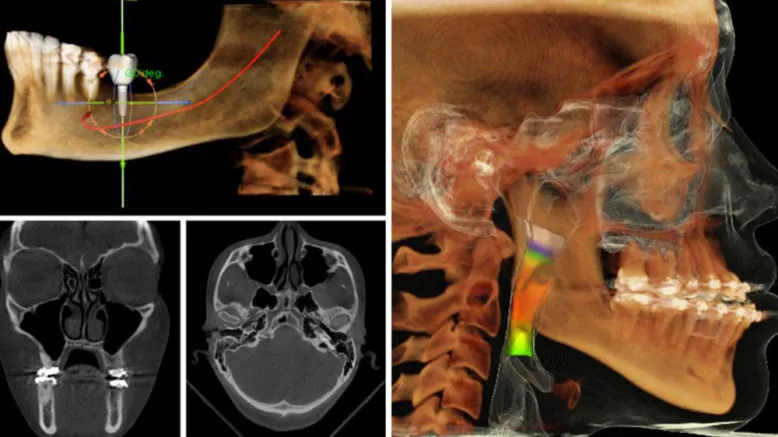Ph.D. in Oral Medicine and Radiology: Introduction, Admission, Registration, Eligibility, Duration, Fees, Syllabus 2024

Introduction:
The Ph.D. in Oral Medicine and Radiology is a specialized program that equips students with advanced knowledge in diagnosing and managing oral diseases, as well as expertise in dental imaging techniques. This rigorous academic and research-oriented degree involves in-depth study of oral health care for medically complex cases, non-surgical management of oral disorders, and the use of conventional and advanced radiographic methods. Graduates emerge as experts capable of contributing significant research and innovation in the field of oral medicine and radiology, enhancing patient care and advancing dental sciences.
Admission Process:
- Eligibility: Candidates must have a Master’s degree or a professional degree equivalent to a Master’s, with at least 55% marks.
- Relaxation: There is a 5% marks relaxation for SC/ST/VJ-NT/OBC (Non-creamy layer)/differently-abled candidates.
- Entrance Exam: Candidates must clear an All India Ph.D. CET (AIPHDCET).
- Interview: A presentation and interview assess research interest/area and competence.
- Research Proposal: Evaluation of the proposed research’s contribution to new knowledge.
- Registration: Based on academic records, CET performance, and interview outcomes.
Eligibility:
- Master’s Degree: Candidates must possess a Master’s degree or a professional degree equivalent to a Master’s degree by the corresponding statutory regulatory body.
- Minimum Marks: A minimum of 55% marks in aggregate is required.
- Relaxation: There is a relaxation of 5% of marks (from 55% to 50%) for SC/ST/VJ-NT/OBC (Non-creamy layer)/differently-abled categories.
- Entrance Exam: Aspirants must clear an All India Ph.D. CET (AIPHDCET).
- Interview: A presentation and interview to assess research interest/area and competence.
- Research Contribution: The proposed research should contribute to new/additional knowledge.
Completion Time:
The completion time for a Ph.D. in Oral Medicine and Radiology: Advanced Dental Imaging Degree typically ranges from 3 to 5 years. This duration may vary depending on the specific program requirements, the research project, and the pace at which the student completes their thesis or dissertation. The program usually includes a combination of coursework, research, and the completion of a thesis or dissertation to contribute new knowledge to the field.
Career Opportunities:
- Academia: As professors or lecturers in dental colleges, imparting knowledge and guiding future professionals.
- Research: Conducting innovative research in oral health, radiology, and imaging technologies.
- Clinical Practice: Working as specialists in hospitals or private clinics, focusing on diagnostic imaging and oral diseases.
- Consultancy: Advising dental practices and institutions on oral radiology and imaging best practices.
- Industry: Collaborating with dental equipment manufacturers on product development and improvement.
- Public Health: Contributing to community oral health programs and epidemiological studies.
Syllabus:
- Oral and Maxillofacial Imaging: In-depth study of imaging techniques used in the diagnosis of oral conditions.
- Diagnostic Methods: Training in various diagnostic tools and methods for oral diseases.
- Oral Medicine: Comprehensive coverage of therapeutics and management of oral disorders.
- Radiation Safety: Education on radiation protection and safety in dental practice.
- Research Methodology: Instruction on designing and conducting research, including statistics.
- Ethics: Understanding of ethical considerations in dental practice and research.
Internship Opportunities:
- Clinical Internships: Engage in hands-on clinical practice in dental hospitals or clinics to apply imaging skills.
- Research Internships: Participate in research projects focusing on advanced dental imaging techniques.
- Teaching Internships: Assist in teaching dental imaging courses at universities or dental schools.
- Industry Internships: Work with dental imaging equipment manufacturers on product development and testing.
- Public Health Internships: Contribute to oral health programs, focusing on radiological aspects of public dental health.
Scholarship and Grants:
- University Scholarships: Institutions may offer scholarships based on academic merit or research potential.
- Government Grants: Research grants from health or education departments to support dental research.
- Private Foundations: Funding from dental associations or private foundations for specific research areas.
- International Scholarships: Opportunities for international students, often based on collaboration between institutions.
- Fellowships: Competitive fellowships that provide stipends and cover tuition for research scholars.
FAQs:
What is the focus of the Ph.D. program?
The program concentrates on advanced oral medicine, radiology, and imaging techniques to visualize oral structures and systemic disease manifestations in the maxillofacial region.
What are the eligibility criteria?
Candidates must have a Master’s degree or equivalent with at least 55% marks. There’s a 5% relaxation for reserved categories.
Is there an entrance exam?
Yes, candidates must clear an All India Ph.D. CET (AIPHDCET) and an interview process.
How long is the program?
The program typically lasts 3 years but can extend depending on research requirements.
What are the career prospects?
Graduates can pursue careers in academia, clinical practice, research, and industry, focusing on oral health and imaging technologies.
Are there opportunities for internships?
Yes, internships in clinical practice, research, teaching, and industry are available for practical experience.
Can I receive financial aid?
Scholarships and grants may be available from universities, government bodies, and private foundations.




